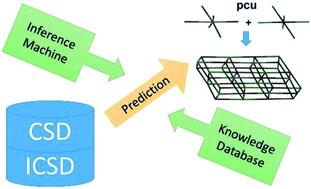当前位置:
X-MOL 学术
›
CrystEngComm
›
论文详情
Our official English website, www.x-mol.net, welcomes your feedback! (Note: you will need to create a separate account there.)
The CSD and knowledge databases: from answers to questions
CrystEngComm ( IF 3.1 ) Pub Date : 2020-04-02 , DOI: 10.1039/d0ce00265h Alexander P. Shevchenko 1, 1, 2, 3, 4 , Roman A. Eremin 1, 1, 2, 3, 4 , Vladislav A. Blatov 1, 1, 2, 3, 4
CrystEngComm ( IF 3.1 ) Pub Date : 2020-04-02 , DOI: 10.1039/d0ce00265h Alexander P. Shevchenko 1, 1, 2, 3, 4 , Roman A. Eremin 1, 1, 2, 3, 4 , Vladislav A. Blatov 1, 1, 2, 3, 4
Affiliation

|
We discuss a general scheme of extracting new knowledge on crystal structures from crystallographic databases. We exemplify the proposed scheme by creating a knowledge database that contains a number of structural descriptors, which reflect geometrical and topological properties of coordination compounds. The initial crystallographic information on 7690 crystal structures was retrieved mainly from the Cambridge Structural Database and processed with the ToposPro program package. We have used a number of machine learning methods to develop a predictive scheme and proved that the Random Forest method provides the best prediction of the overall topological properties (dimensionality and underlying topology) of coordination networks. We show how the developed knowledge database and predictive scheme can be considered as a prototype of an artificial intelligence system, which can be used to answer typical questions that arise in the design of coordination compounds.
中文翻译:

惩教署和知识数据库:从答案到问题
我们讨论了从晶体学数据库中提取晶体结构新知识的一般方案。我们通过创建一个知识数据库来举例说明该方案,该知识数据库包含许多结构描述符,这些描述符反映了配位化合物的几何和拓扑特性。有关7690晶体结构的最初晶体学信息主要是从剑桥结构数据库中检索的,并使用ToposPro处理的程序包。我们已经使用了许多机器学习方法来开发预测方案,并证明了随机森林方法可以为协调网络的整体拓扑属性(维数和基础拓扑)提供最佳的预测。我们展示了如何将发达的知识数据库和预测方案视为人工智能系统的原型,该系统可用于回答配位化合物设计中出现的典型问题。
更新日期:2020-04-24
中文翻译:

惩教署和知识数据库:从答案到问题
我们讨论了从晶体学数据库中提取晶体结构新知识的一般方案。我们通过创建一个知识数据库来举例说明该方案,该知识数据库包含许多结构描述符,这些描述符反映了配位化合物的几何和拓扑特性。有关7690晶体结构的最初晶体学信息主要是从剑桥结构数据库中检索的,并使用ToposPro处理的程序包。我们已经使用了许多机器学习方法来开发预测方案,并证明了随机森林方法可以为协调网络的整体拓扑属性(维数和基础拓扑)提供最佳的预测。我们展示了如何将发达的知识数据库和预测方案视为人工智能系统的原型,该系统可用于回答配位化合物设计中出现的典型问题。


























 京公网安备 11010802027423号
京公网安备 11010802027423号